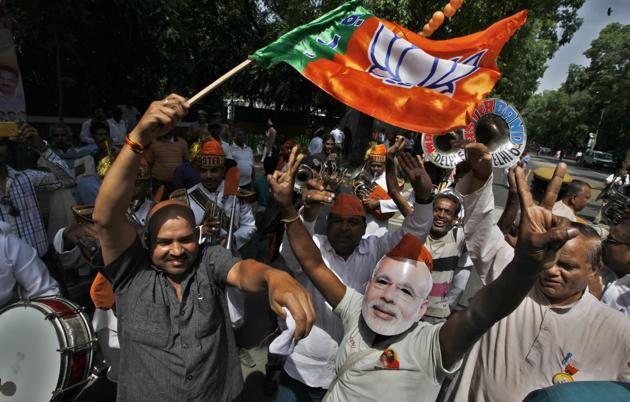BJP way ahead of competition on social media in 2014, says Stanford Univ study
The BJP-led NDA was ahead of competition in number of political tweets by followers, retweets and positive posts.
The influence of social media on the 2014 Lok Sabha elections was “massive”, says a Stanford University study that examined the use of Twitter ahead of the polls that brought the BJP to power after a decade of Congress rule.

The BJP-led National Democratic Alliance (NDA) was ahead of the competition in the number of political tweets by its followers, retweets they were able to secure, and positive posts for the alliance throughout the campaign.
The NDA had a higher network strength based on clustering than the Congress-led United Progressive Alliance (UPA). The follower strength for the NDA was higher, too.
Negative tweets for the BJP coalition were far less than its rivals. The gap widened towards the end of the staggered elections from April 7 to May 12 three years ago.
The findings are significant because the ruling BJP continues to dominate the social media space in India, three years after coming to power with a landslide victory and winning several crucial state and civic elections subsequently.
The analysis of 15.5 million user accounts and 10.6 million tweets indicate that many traditional politicians lost the election because of their reluctance to change and adopt new tools of communication.
Congress’s Shashi Tharoor, the first parliamentarian to embrace Twitter with about 6,000 followers in 2009, said social networkers don’t represent the entire electorate.
Therefore, Twitter trends reflect nothing more than the politically-engaged segment of the educated, English-speaking classes, a tiny minority of the electorate.
“The BJP’s dominance in this space does not at all reflect any prospect of guaranteed political dominance. You could study Twitter during the Delhi and Bihar state assembly elections in 2015 and you will see a great deal of pro-BJP sentiment, but at the ballot box they lost both state elections,” he said.
The Stanford researchers analysed 18,000 tweets originating from Indian politicians — covering six months leading to the general elections. NDA politicians’ followers posted 2.5 million tweets, while it was a million each for the UPA and the Aam Aadmi Party (AAP).
The AAP, formed in November 2012, had the strongest social network in the 2014 elections.
The interconnection of its followers was the strongest with a large number of individuals in the twitter graph following each other and AAP politicians.
The NDA wasn’t as strong but still around eight times stronger than the UPA.
“Our results show that on almost every metric of network evaluation, the NDA outperformed the UPA, AAP and other political parties. The strength of the winning party’s network and the rigour with which they pursued their social media strategy seems to have paid off,” says the study released recently.
According to Tharoor, the tweets in 2014 reflected nothing more than the relative organizational strengths of social media units on both sides.
“But as cheaper smartphones and 4G SIMs make access to the internet more universal, that story could change and Twitter could become more reflective of genuine public sentiment.”
“In that case it may indeed become possible one day to predict poll results from social media trends. But not yet,” he said.
The Stanford research was part of a project on social and information network analysis by Arpan Shah, Anunay Kulshrestha and Devin Lu.
Get Current Updates on India News, Gyanvapi Case, Farmers Protest Live along with Latest News and Top Headlines from India and around the world




